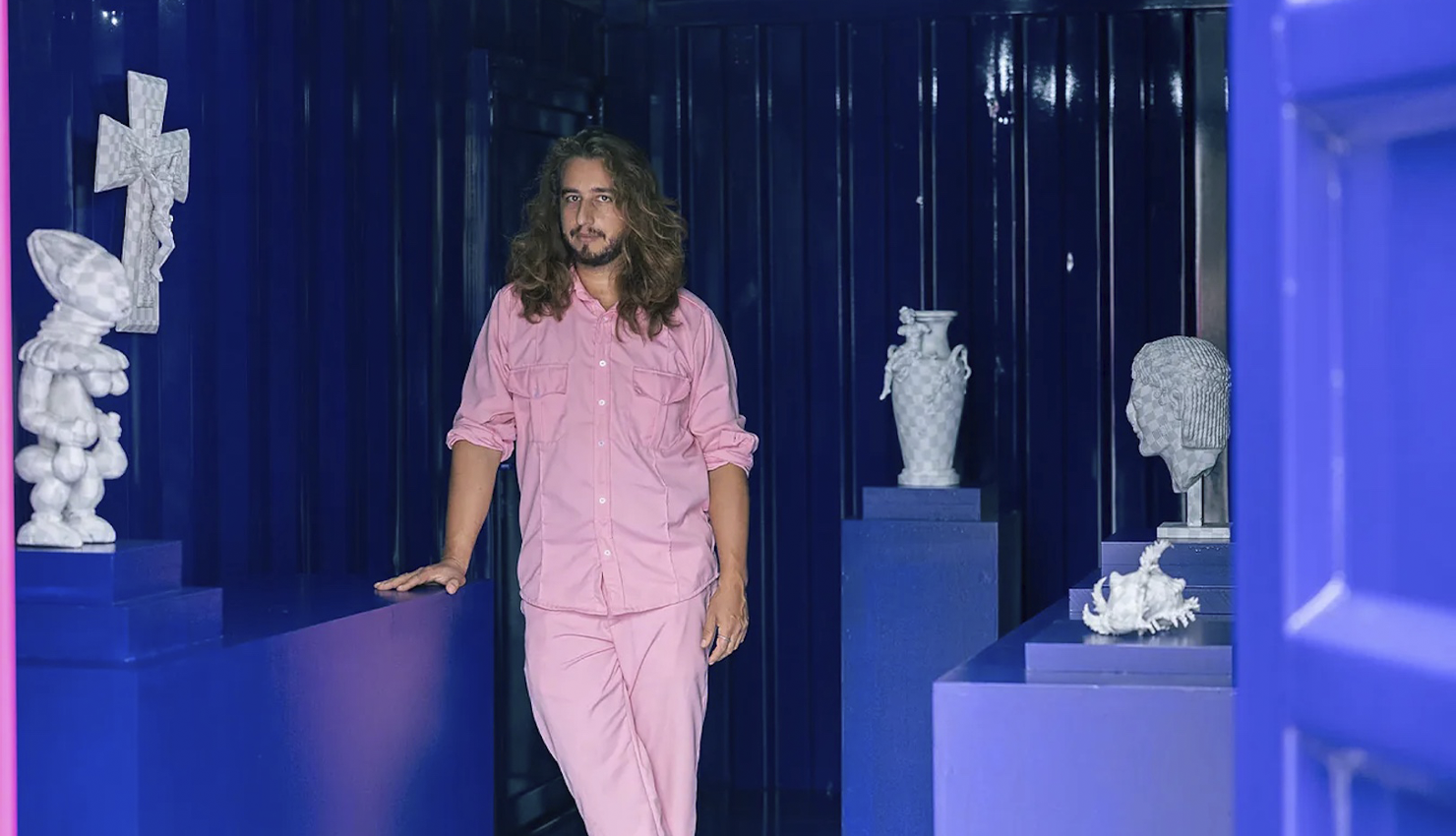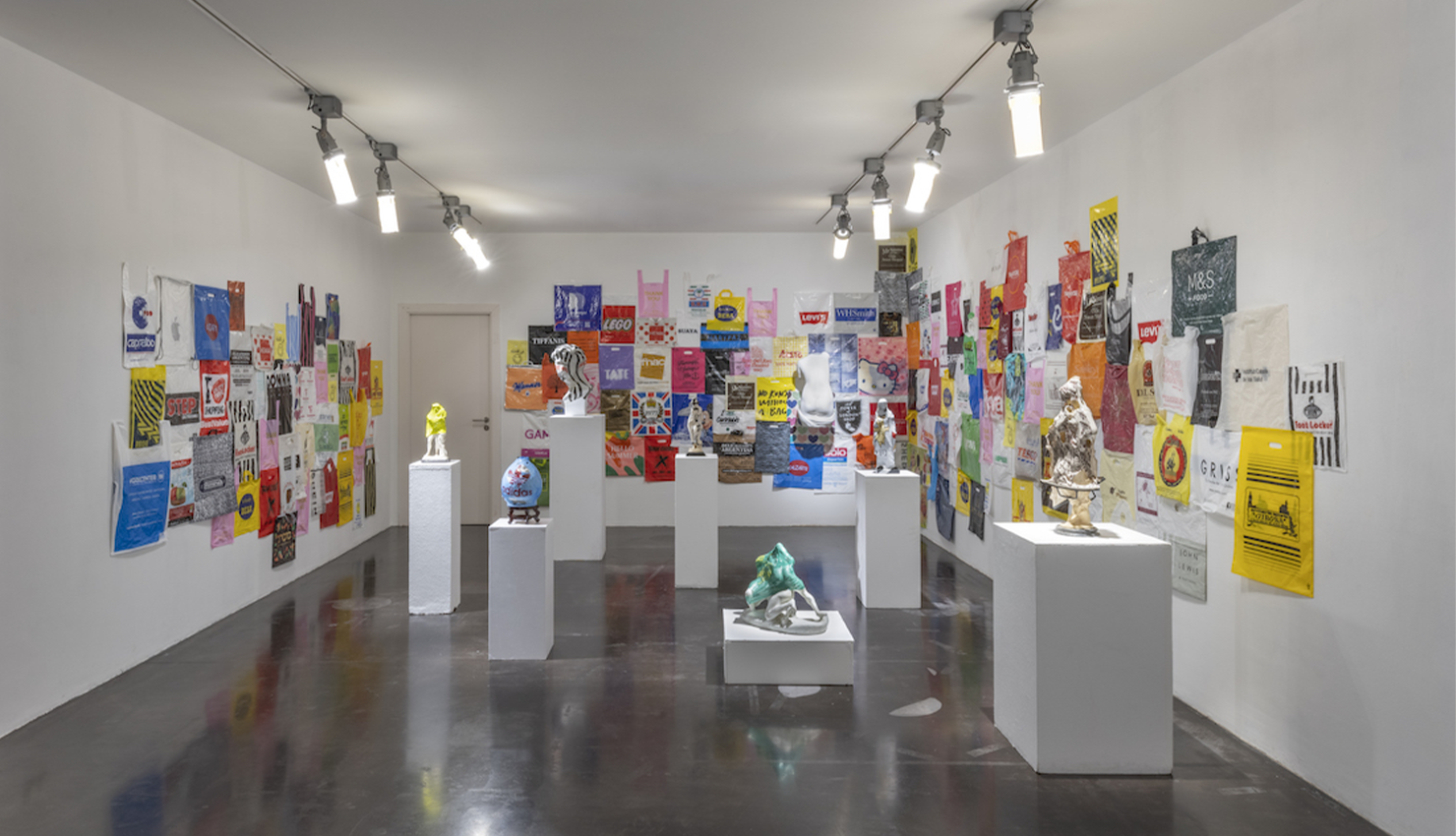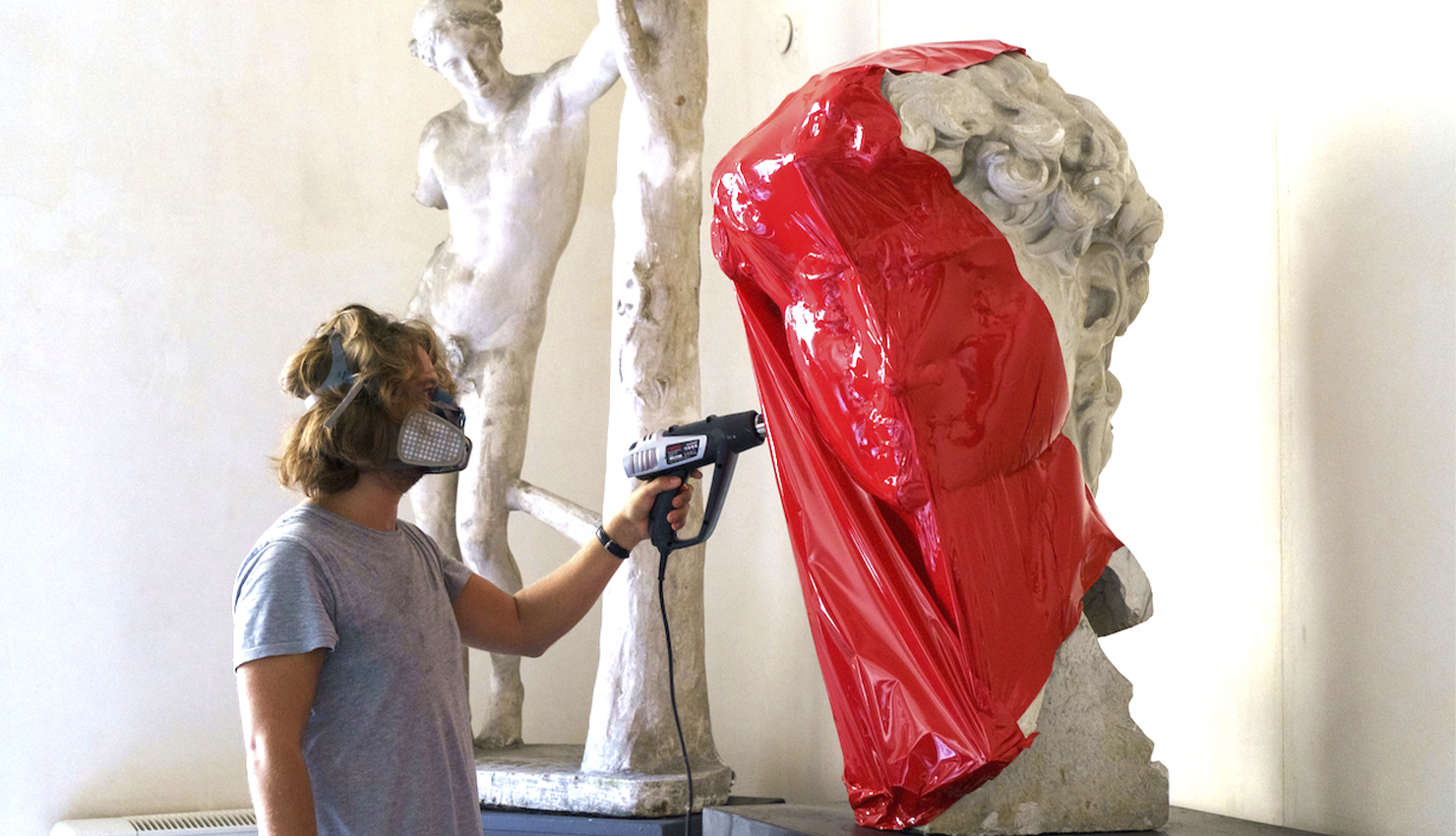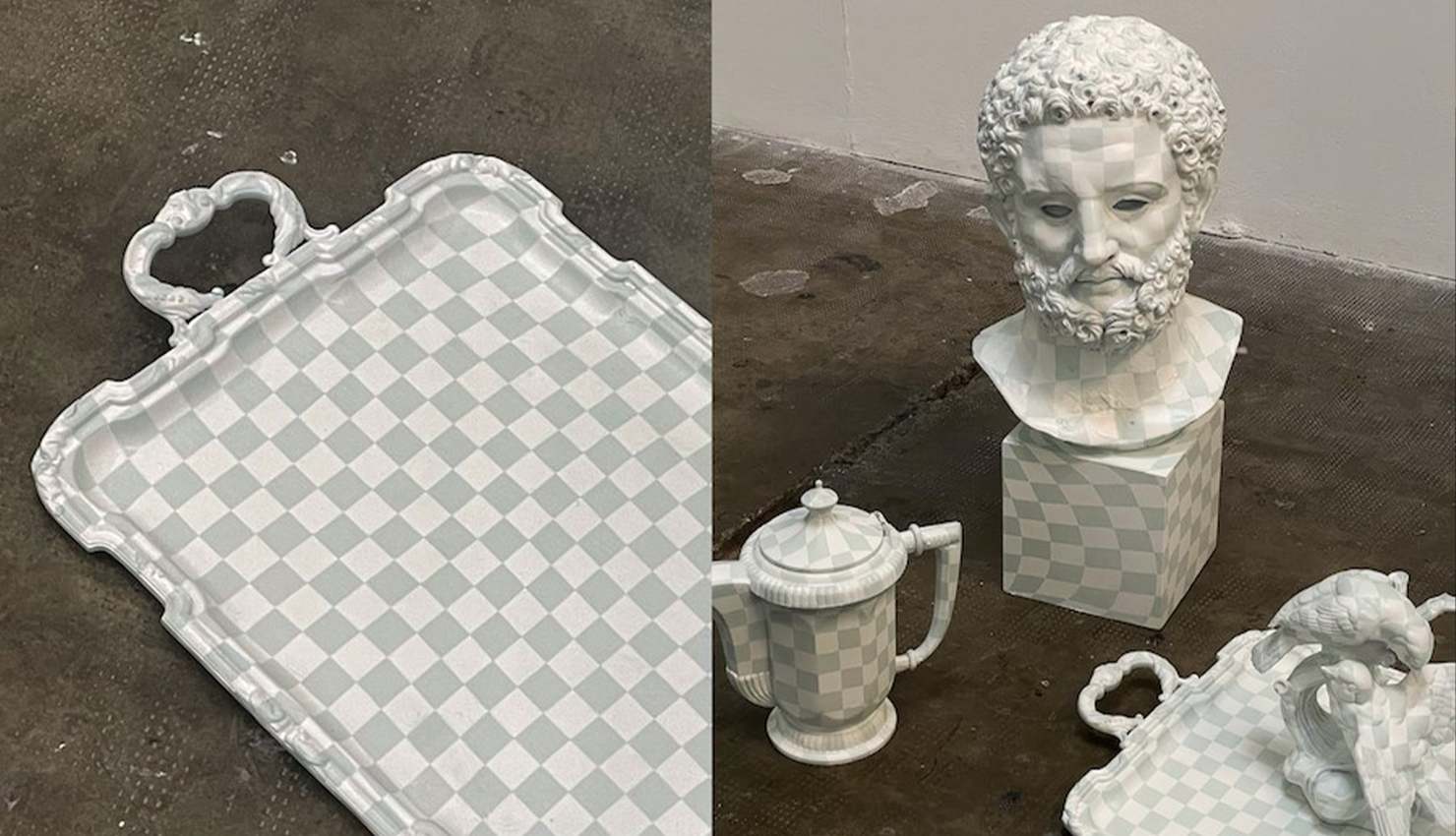This year has been a turning point in the artistic career of Gastón Lisak, who continues to grow in the world of contemporary art with exhibitions in different parts of Spain.
Through his critical and reflective art he has captivated the public with exhibitions such as Lossless at the ADN Fórum in Madrid or at the Fundación Guinovart in Lleida, where he presented Dialogando entre Ex Votos, together with pieces by Josep Guinovart. For this November, Lisak has travelled to Barcelona with two outstanding proposals: ByInvitation at the Círculo Ecuestre and Crítico at the MEAM, where he continues to explore how everyday objects ‘allow us to better understand who we are and where we want to go’.
Gastón Lisak redefines the quotidian
On 10 November, the artist concluded his exhibition in By Invitation, at the Círculo Ecuestre in Barcelona, where he reflected his vision of the fragility of the material and the digital. Through the pieces of his series Lossless, Lisak makes us reflect on the meaning of objects in the digital era. The exhibition fuses figures from different cultures, and with a PNG pattern they are perceived as if they were transparent.

Gaston Lisak with pieces from his Losslessseries, including, Telva Living at ADN Forum. Editorial credit: Rafa Zamora, 2024.
On the other hand, at the MEAM in Barcelona, the exhibition Crítico brings together Gastón Lisak and 30 other artists in a space where art becomes a focus for questioning the truths that we take for normalised. Under the curatorship of Luis López and the gallery Inéditad, Crítico invites us to explore works that speak of social justice, sexual diversity or resistance in the face of contemporary crises. Lisak, faithful to his exploration of Mundane Archaeology, brings to this show two pieces called Marchand de Rêves. The works invite us to travel to the world of merchants and discover the stories behind each of the pieces they sell. The exhibition will be on display until 19 November.

The interior of the exhibition of the series Arqueología Mundana. Curated by Mariella Franzoni. Editorial credit: Roberto Ruiz.
For the artist, his interest in the anthropology of materials began with visits to second-hand markets, spaces that seemed almost magical to him. In this way, through his exhibitions he invites us to rediscover the value of what seems commonplace to us. We can see in each piece a different story and, in each story, a part of ourselves.
‘I have always been fascinated by those places full of enchantment, stories, memories and dreams. I think it’s a kind of passing place where you don’t quite know what’s going to happen,’ explains the artist.
The critical journey through art
Lisak has found in everyday objects a great tool to reflect on our own society, an artistic approach that links him to Arte Povera. As the artist tells us, in 2018 he had the good fortune to meet Michelangelo Pistoletto in Havana, where he directed the Third Paradise Forum, and participated alongside the creators of Random Happiness. In addition to Pistoletto’s influence, Lisak’s work has been enriched by the creative vision of artists such as Ai Weiwei, Antoni Miralda, Joana Vasconcelos, David Hammons, Bruno Munari and Desislava Terziera.

The artist working on one of the pieces of Sacred Plastic. L’Ascensore Gallery. Editorial credit: Filippo M. Nicoletti.
The artist spends long periods of time searching for objects, although he believes that ‘they find me, and we generate a dialogue to find their transformation’.
His work encompasses several lines, such as Sacred Plastics, Arqueología Mundana, Normalización or Lossless, all focused on the reinvention and constructive criticism of everyday objects in order to see them from a new perspective.

Some of the pieces exhibited in Madrid from the Losslessseries in the artist’s studio in Badalona. Editorial credit: Courtesy of the artist.
In the case of Sacred Plastic, which was exhibited at the Fundació La Caixa, Lisak reflects on the nature of plastic, a material he describes as a ‘double-edged sword’. He says that it is attractive because of its versatility, but also harmful when used irresponsibly. Through his sculptures, he captures the fascinating and suffocating nature of the material, reflecting the impact of plastics in our daily lives.
Your work has a clear reflection of Arte Povera, how did your interest in this movement come about?
I had the opportunity, in 2018, to meet Pistoletto in Havana, where he directed the Foro Tercer Paraíso and was closely involved with Random Happiness. Also, I’m interested in art as a way of understanding our environment, and objects are very important, as they define us as societies. I work a lot with mundane archaeology, objects of the present that allow us to better understand who we are and where we want to go.
Could you tell us about the ready-made working process you follow in your sculptures?
Working a lot with objects, I spend long periods of time searching for them. Sometimes I think they find me, and we generate a dialogue until we find the right transformation. I have several lines of work: Sacred Plastics, Mundane Archaeology, Normalisation or Lossless. All of them are based on a different transformation of objects in order to see them in a different way. As the German poet would say: ‘Making the familiar strange, and the strange familiar’. I believe in art as an archival process. As stories linked to a very marked context, which apart from being beautiful, physically and conceptually, serve to better understand where we come from.
How did your interest in the anthropology of materials come about?
I started going to second-hand markets. I have always been fascinated by these places full of enchantment, stories, memories and dreams. I think it’s a kind of passing place where you don’t quite know what’s going to happen. It’s like when you go to an airport and everyone has their own life and destination. In the markets something similar happens, many objects come from one place and end up going to totally different places.
In your series Sacred Plastic you show the controversy generated by plastic. What interests you about this material?
Plastic is a double-edged sword. A sexy material, because it has allowed us to create many things, but at the same time very harmful if used in large quantities and without thinking about it. I think that with my sculptures I reflect both elements, the versatility and fascination of the material, and on the other hand, its suffocation.
Which artists have influenced you the most?
Without a doubt, being close to artists such as Antoni Miralda, Joana Vasconcelos, Ai Weiwei, David Hammons, Michelangelo Pistoletto, Bruno Munari and Desislava Terziera.




